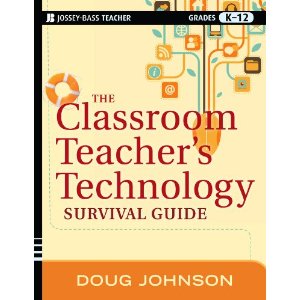If they let me design the math curriculum
 Tuesday, February 8, 2011 at 06:49AM
Tuesday, February 8, 2011 at 06:49AM I understand why top students - the A+ types - learn physics and calculus. I get why they study classic literature and the details of history. The kids in this brainy group are the future professors, scientists, and engineers who will propel civilization forward.
But why do we make the B students sit through these same classes? That's like trying to teach a walrus to tap dance. It's a complete waste of time and money. And most students fall into that middle category. I assume this ridiculous educational system is a legacy from a day when generic mental training was good enough for just about any job.
In our modern world, would it make more sense to teach B students something useful, such as entrepreneurship? Scott Adams, Educating B Students
I've talked to a number of adults who, like me, are fairly well convinced that they could not graduate from high school today given the "rigorous" math curriculum requirement. And I am damn sure the majority of the legislators and business leaders who think four years of math is essential for every student couldn't either.
But as I think about it, four year of math is a great idea - we just need to start teaching the right kind of math - consumer math.
In my school days, "consumer math," was a euphemism for dummy math. You can't hack algebra or trig, Consumer Math class is for you. Ironically, today's graduate needs "consumer math" a heck of a lot more than trigonometry. In such a course I would include:
- Calculating interest rates on credit cards and other consumer loans.
- How to do your own income tax returns - state and federal.
- Determining both the rate of return and maintenance cost on mutual funds and other investments.
- Reading and interpreting statistics in the media.
- How to spot a Ponzi scheme (or how to run one).
- Applied statistics: chance of wining the lottery, odds of paying higher taxes because you make over $250,000, likelihood of inheriting a large sum of money when none of your relatives are rich, etc..
- Creating a personal budget and retirement plan.
- Understanding the current federal, state and local tax codes and determining the percentage of total income paid by different levels of income earners,
- Doing cost/benefit comparisons of medical, life, health, car and home insurance policies.
- Converting measurements from metric to English - applied especially to medications.
- The fundamentals of entrepreneurship (as Adams suggests above.)
- And just a dose of bullshit literacy for good measure.
I'm sure you could add to this list rather quickly. I don't know who is qualified to teach it - maybe curmudgeons after retirement? Can we please get alternative licensure?
It would be pretty easy to create similar classes that would replace the traditional physics, English literature, and government classes as well - just to show I'm not picking on math. Trouble is, there may not be enough curmudgeons to go around.
Of course this won't happen. Both businesses and governments depend on ignorance for their survival.

Image source: highlands.edu









Reader Comments (7)
I completely agree, especially with a focus more on STATISTICS rather than algebra and then trig and calculus. That's where real math literacy lies and the people who want to go on to higher math will when they get to college. I imagine citizens with a better grasp of basic statistics would be more skeptical of the polling data presented in the media and it might even have helped us not get into the financial crisis we've found ourselves in.
Thanks,
Jim
One more reason I think you should start the revolution! You are right on with this!!
I totally agree!! I could've seriously used a consumer math class before college ... heck, sometimes even now. I could have taken one in high school, but it wasn't considered a "college prep" course and therefore didn't count towards my math credits, so I didn't take it. Considering most jobs don't actually need algebra, etc, but need consumer math, I think it should be taken by everyone.
When I taught Excel in my computer classes, I had assignments that calculated how much you would pay for an item such as a stereo system if you bought it on credit... compared to how long you'd have to save to pay cash. It also showed how much money you'd be "out" as you made payments on the credit card. Kids were alway astounded. Becauase it was a spreadsheet, they then searched the Net for items they wanted and plugged in the prices... I hope it helped a few of the students learn some practial math!
Hi Laura,
Sounds like a great project.
When I taught literature classes, there was some short story in which the husband and wife were struggling with finances. I used that as a jumping point to talk about the real cost of living with HS juniors. Quite an eye-opener for some of them, I think.
Doug
I hope you do not mind if I use some of your "consumer math" examples in my "Life outside the classroom" sections of my website. WWW.K-12math.info is trying to get OER (Online Educational Resources) math textbook developers to incorporate examples and exercises along those lines. OER developers like CK12.org in their 6th and 7th grade math materials are responding to the inclusion of consumer math. Thank you.
Hi Jim,
Please help yourself. All my writings are under Creative Commons license. Good luck with your site!
Doug